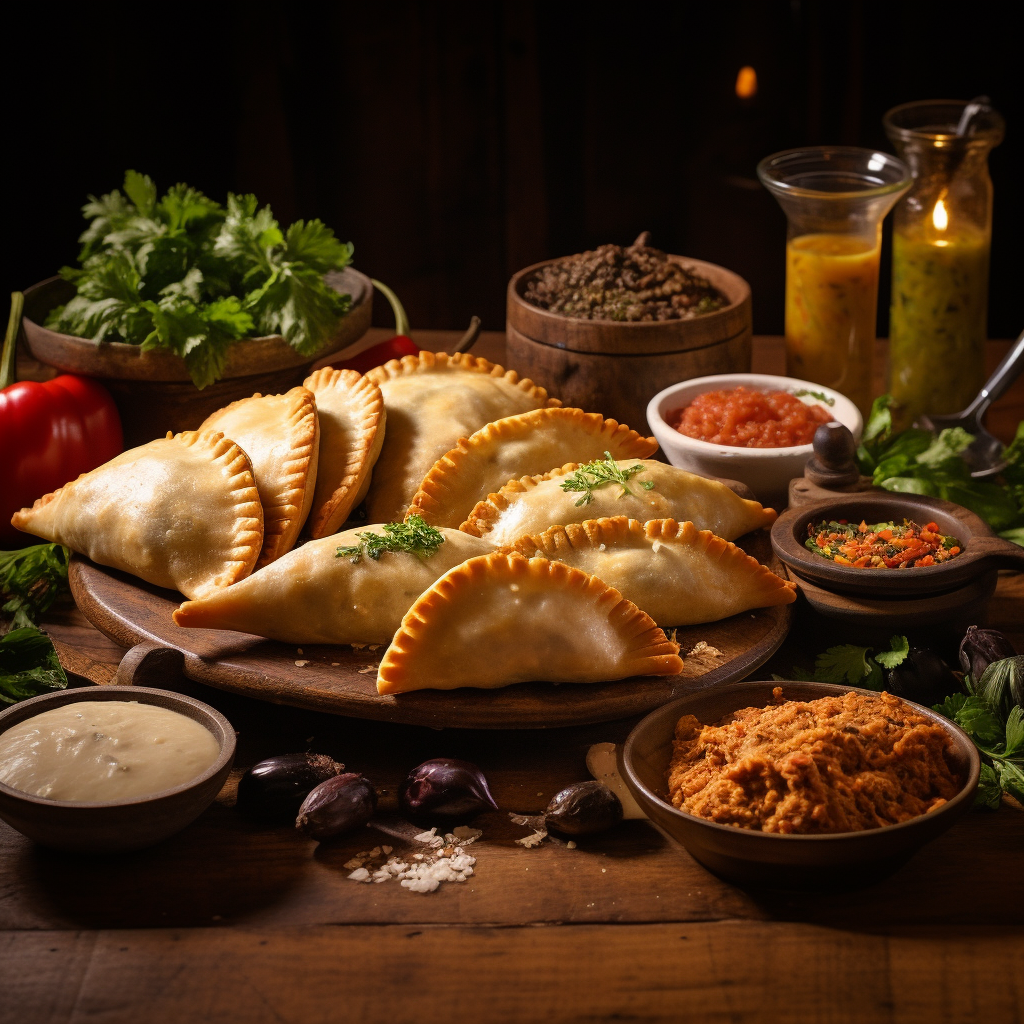Dearest Gourmands,
I beseech you to don your most adventurous hats and board the HMS Epicurean, as today we set sail on a culinary voyage through the ebullient waters of Latin American cuisine! Our destination: the enchanting world of empanadas. These divine pastries, with their flaky crusts and sumptuous fillings, are akin to treasure chests of flavor, hoarded and adored by nations across Latin America.
Ah, the empanada, my gastronomic companions! Its name derived from the Spanish verb ’empanar’, meaning to wrap or coat in bread, this delectable delight has voyaged across continents and centuries to reach its present magnificence. So, avast ye! Allow me, Percival Q. Higginbottom, to be your captain on this delicious journey.
The Provenance of the Empanada
The noble empanada did not originate in the Americas but rather sailed across the tempestuous Atlantic with the Spanish and Portuguese explorers. Its ancestors were found in the Iberian Peninsula, where they were savored by both Moors and Christians. The empanada’s lineage can be traced back to the Persian sanbosag and the Indian samosa, reflecting the rich tapestry of human migration and cultural exchange.
The Diverse Palette of Latin America
As the empanada made landfall in the New World, it found fertile culinary ground in the diverse ingredients and cultures of Latin America. From the cool highlands of the Andes to the sizzling Pampas of Argentina, the empanada blossomed into countless varieties.
In Argentina, the empanada became a national treasure, with juicy minced beef, hard-boiled eggs, olives, and spices enveloped in a tender crust. The delectable Chilean empanada de pino, in turn, contains a sumptuous filling of minced meat, onions, raisins, black olives, and a hard-boiled egg.
In Bolivia, the salteña is a resplendent twist, filled with a juicy stew, akin to a sumptuous pot of gold that is wrapped in a delectable crust. Meanwhile, the Colombian and Venezuelan empanadas often comprise a golden cornmeal crust encasing spiced meats and vegetables.
The Caribbean too, with its zest and vivacity, adopted the empanada. Puerto Rican empanadillas, my dear culinary wayfarers, are a festival of flavors with seafood, meats, and tropical fruits embraced by a crisp, fried dough.
An Ode to Unity
In essence, the empanada is more than a pastry; it is a symbol of unity and diversity. The sharing of an empanada is an act of cultural communion – a piece of history, an amalgamation of flavors, and a shared human experience. Its myriad variations across Latin America stand as a testament to the splendor of human creativity and the endless possibilities that arise when cultures intermingle.
So, let us raise our glasses and toast to the exquisite enchantment of the empanada – a humble pastry that wields the power to traverse history and unite worlds.
Yours delectably,
Percival Q. Higginbottom

Further Reading:
- The History and Origins of Empanadas: This article from Smithsonian Magazine dives into the rich history of empanadas and their origins.
- Latin American Empanadas: A User’s Guide: Saveur provides a comprehensive guide to the different types of empanadas found throughout Latin America.
- Empanadas Around the World: TasteAtlas showcases empanadas and their variants across the globe, documenting similarities and differences.





6 thoughts on “The Exquisite Enchantment of Empanadas: A Culinary Voyage through Latin America”
Your article helped me a lot, is there any more related content? Thanks!
Thank you for your sharing. I am worried that I lack creative ideas. It is your article that makes me full of hope. Thank you. But, I have a question, can you help me?
Thank you for your sharing. I am worried that I lack creative ideas. It is your article that makes me full of hope. Thank you. But, I have a question, can you help me? http://atom-usdt.cryptostarthome.com
Your article helped me a lot, is there any more related content? Thanks! https://www.binance.com/join?ref=P9L9FQKY
I don’t think the title of your article matches the content lol. Just kidding, mainly because I had some doubts after reading the article.
Unobet Casino’s alright, I guess. Tried my luck there a week or so back. Nothing particularly amazing, but no major complaints either. Worth a peek maybe? unobetcasino